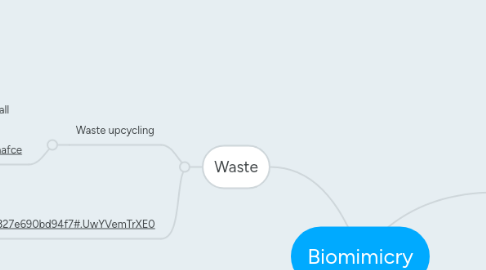Biomimicry
by Jack Goins

1. Eyesight
1.1. Eyes of some birds, insects, and fish see better than humans because they can detect ultraviolet and/or infrared light. http://www.asknature.org/strategy/55e528812ff0cab4a9cbe2c4ab62dce0#.UwYVL2TrXE0
1.2. Eyes of oilbirds allow them to see in dark caves by having rod receptors arranged in a banked structure, providing the highest photoreceptor density recorded in vertebrate eyes. http://www.asknature.org/strategy/1b9025a5cf9ec646fbbd4cc4e0468519#.UwYU3GTrXE0
2. Waste
2.1. Waste upcycling
2.1.1. Waste Management is mimicking the way that natural systems reuse all materials. In nature, there's no such thing as garbage, because every molecule is used in some way. http://www.asknature.org/product/fc4d0678aa5aba1b8195ec177bcaafce
2.2. Dung beetles play an important role in nutrient cycling and soil generation because they feed on and bury feces. http://www.asknature.org/strategy/8e460fd0624fd35ada1327e690bd94f7#.UwYVemTrXE0
3. Humans
3.1. Muscles of humans go through self-repair and remodeling due to a modular system that incorporates nutrient and waste transport. http://www.asknature.org/strategy/2bad51df7f545eb2acca674c89c2dd3b#.UwbUa2TrXE0
3.2. Infestation of humans by parasitic worms (helminths) induces a dampened immunological response in human beings. http://www.asknature.org/strategy/c6a2aadb71750fea670b8e3b1312b0a9#.UwbUCGTrXE0
4. Sense
4.1. Socketed hairs of insects detect environmental stimuli through vibration. http://www.asknature.org/strategy/95c8094ba6a0bde79ce3eddef37dc7ef#.UwbU1GTrXE0
4.2. The ocelli of insects sense day length via a small lens and pigmented retinal cells. http://www.asknature.org/strategy/61cb267828b94ccb67a1ceeedc8651e6
4.3. The noses of some domestic dogs can detect some forms of cancer in humans via an acute sense of smell. http://www.asknature.org/strategy/1598aad7db170d2dc963a597f8045af7



